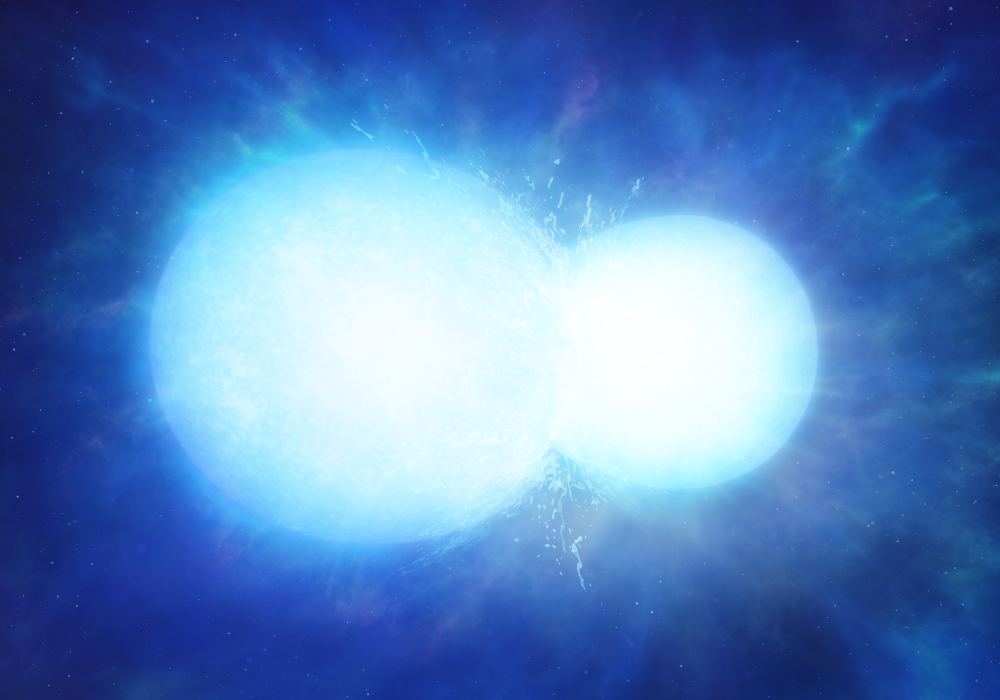Image: Courtesy of Universe Today, shows two white dwarf stars merging
In a recent paper by Michael Tucker he has investigated Type Ia supernova, publishing his findings in the Monthly Notices of the Royal Astronomical Association, his paper can be found HERE, but here is a simplified overview – I hope it does it justice.
When stars like our Sun reach the end of their lives, they can become white dwarfs – dense, cooling remnants. If two white dwarfs orbit closely in a binary system, their gravitational dance can sometimes lead to a dramatic event: a Type Ia supernova. This study explores a special subset of these explosions, which show unusual patterns in their light – called “bimodal profiles” – and why they seem to only occur in certain types of galaxies.
- Where These Supernovae Happen:
These unusual explosions mostly occur in massive galaxies that have stopped forming new stars. These are often “elliptical galaxies,” home to older stars. It seems that the calmer, older environments of these galaxies provide the right conditions for two white dwarfs to merge. - How Two White Dwarfs Merge:
Over time, gravity pulls the two stars closer together. Eventually, they collide or merge, triggering a runaway thermonuclear explosion. This process produces the bright light we see as a supernova and creates heavy elements like iron and nickel. - Why the Light Patterns Are Different:
The “bimodal profiles” are essentially two distinct peaks in the light emitted by the supernova. This happens because the explosion isn’t symmetrical – it’s like a firework bursting unevenly. This kind of pattern is a clue that the explosion comes from two merging stars rather than a single star with a companion, which was another popular theory for how these supernovae form. - Looking at the Big Picture:
These findings suggest that up to 40% of all Type Ia supernovae could come from white dwarf mergers. The rest may still involve other scenarios, like a single white dwarf pulling material from a neighbouring star until it explodes. The exact “recipe” for these explosions likely depends on the age and type of the galaxy they occur in.
Type Ia supernovae are more than just spectacular explosions – they’re essential for understanding the universe. Astronomers use them as “cosmic yardsticks” to measure distances across space. Knowing more about how these supernovae form helps improve the accuracy of these measurements and sheds light on how elements like iron, which we depend on, are created.
The study answers a big question about why some supernovae have these unusual light patterns. However, it raises new puzzles. For example, why do merging stars produce this specific kind of explosion only in certain galaxies? And are there other, rarer processes at play?
By studying these explosions, astronomers continue to piece together the incredible story of how stars live, die, and recycle their material into the universe – including the building blocks of life on Earth.
